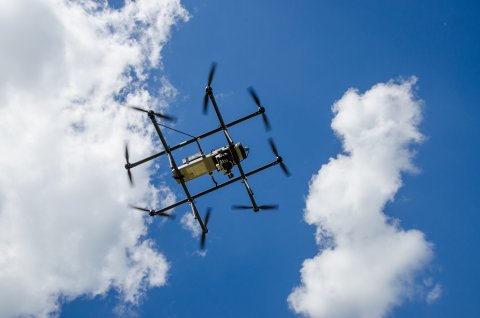Digital technologies are entering our lives in all spheres. They get as well actively applied in agriculture, which is an inextricable part of the Chelyabinsk region. South Ural State University makes special contribution into development of crop cultivation in the region. Geoinformation Systems Research and Education Centre (GIS REC) at SUSU is working on digitalization of the region’s territory in order for a more rational use of land resources, and is planning to make a digital map of the Southern Ural in 2019.
SUSU’s GIS REC started creating the digital map of the Chelyabinsk region’s land in 2014. It has been compiled on the basis of high-definition satellite images with further overlaying of cadaster, topographic, vegetation and other maps. Supercomputer technologies of the university are used for integration of data into a single high-precision system. This project allows seeing the borders of fields, reliefs of land areas, cultivated crops and even chemical composition of soil in a digital format using any electronic device.
The Centre brings together research interests of specialists from various spheres, who are capable of working with massive data using the supercomputer and develop unique software products, just like the digital map. In 2014-2015, GIS REC successfully completed digitalization of the pilot Oktyabrsky District of the Chelyabinsk region, and in 2018 specialists of the Centre digitalized 10 districts. This project is being implemented upon an order of the region’s Ministry of Agriculture.
The SUSU Rector Aleksandr Shestakov praised the Centre’s operation: “South Ural State University is a unique institution with a huge potential. We have supercomputer technologies, specialists working with Roscosmos, mathematicians capable of performing high-quality processing of obtained data. Therefore, we form crosscutting teams in order to solve problems of such a scale. We are the only ones in the Chelyabinsk region and all over the Ural federal District who can perform such kind of work at such a high level. Moreover, our university is one of the acknowledged experts in this sphere over the Russian Federation.”
Land digitalization assumes translation of all data regarding one or another territory from its paper variant into the digital one at a single map-making platform, including the information about designation, presence of the owner and status of the land. The latter is of a huge importance for a rational use of the region’s resources: according to data obtained by GIS REC staff, the area of unaccounted or abandoned lands in the digitalized regions amounts 5 to 50%. Putting these resources into operation is of interest for agrarians, municipalities and the region.
The uniqueness of the cartographic system if also in the fact that it allows learning the chemical composition of soil. This will allow selecting the correct type of crops applicable for one or another area of the cultivated field, and apply necessary fertilizers in order to enhance crop productivity.
Data relevance is provided by constantly updating information regarding the condition of lands. Thus, the digital map allows for a more efficient sowing campaign, which is supposed to essentially improve the condition of the agricultural industry of the Chelyabinsk region. The main positive results that the region aspires to achieve using the developed system were summarized by the Director of GIS REC, Valentina Maksimova:
“Combination of already-existing experiences of farming with the tools of digitalization provides a synergistic effect which can influence the economic development of agriculture and the investment attractiveness of the Chelyabinsk region, which in turn leads to the possibility of keeping the best cadre in the region. It is extremely important that the rational land use will favor for improvement of the environment. Agroecology is directly connected with food security. Quality of the products that we eat depends on soil’s fertilization, which means our health depends on it as well. Due to the digital map, we can assess the condition of lands designated for farming and treat them with care. These are the issues worth working on.”
Specialists of SUSU’s GIS REC install Glonass GPS-sensors on mobile vehicles in order to perform monitoring of people’s and equipment operation on the field. Sensors allow surveilling places of operation of tractors, combine harvesters, etc., the area they’ve covered, and the quality of the conducted agro-processing operation. But in order for farmers and agriculturists to be able to do this, they need to learn to use the system developed at the university. SUSU’s Geoinformation Systems Centre conducts educational workshops for executives and specialists of regional directorates of agriculture, economics departments and land committees.
“There is no need to come to the field in order to identify a crop or determine the field’s borders – today all the necessary information is stored in a tablet or at a web-interface, and it is enough for working. However, teaching specialists of the regions to use this system is our duty,” emphasized a programmer of GIS REC, Igor Glazkov.
According to the Director of GIS REC, specialists of the Centre are going to complete the digital map of lands of agricultural designation for 12 more regions of the Chelyabinsk region in 2019.




